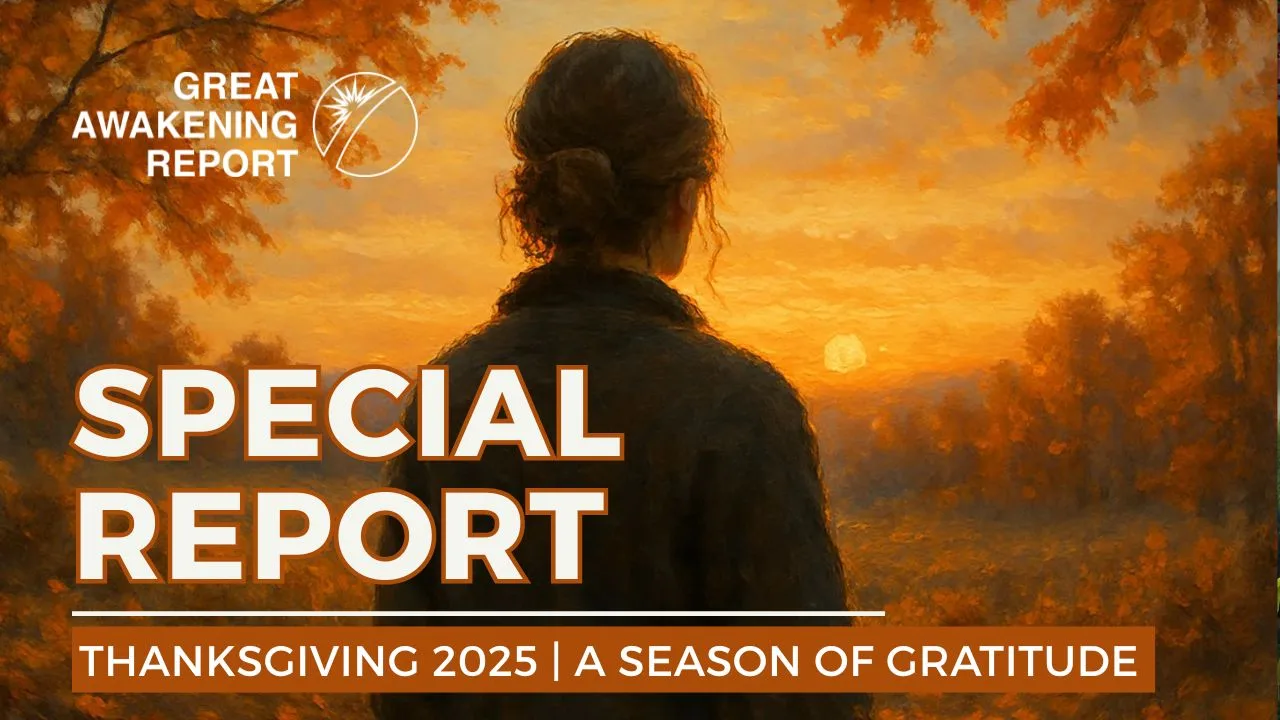Understanding the Shutdown: What Led to This Point?
The recent U.S. government shutdown, primarily caused by political standoffs surrounding budget allocations, unveils a complex tapestry of events leading to the funding lapse. Key factors include partisan divisions and significant disagreements over spending priorities. Beyond the partisan blame game, this latest shutdown serves as a mirror reflecting the deeper dysfunction in the American experiment — an economy and political system increasingly at odds with the people it was designed to serve.
In recent years, political polarization has exacerbated issues within Congress, particularly around contentious topics such as healthcare funding and immigration reform. For instance, budget negotiations have stalled as Democrats and Republicans often find themselves at an impasse over fiscal strategies and policy reforms. This has led to repeated short-term funding measures that fail to address systemic budgetary needs, resulting in crises that heighten political tensions.
Specifically, the 2023 shutdown highlighted stark divisions over fiscal responsibilities, with significant debates surrounding the allocation of resources that prioritize social services versus defense spending. Such divisions reflect broader ideological battles, illustrating the deep rifts within contemporary American politics.
Additionally, the cumulative effect of previous shutdowns has impacted trust between party leaders, making collaboration increasingly difficult. Historical data indicates that each shutdown typically costs taxpayers and federal workers significantly more than collaborative negotiations might have, further complicating matters. The most notable recent shutdowns occurred in 2018 and 2019, driven by similar funding disagreements.
For more information on the ramifications of political tensions in budget debates, see our articles on related issues: Weekly Briefing and Kavanaugh Confirmed and Social Media Purge.
Historical Context: A Look at Previous Government Shutdowns
The history of government shutdowns in the U.S. dates back to the late 1970s, with notable episodes highlighting the fraught relationship between Congress and the presidency. The first shutdown occurred in 1976 during Gerald Ford’s administration, escalating in frequency and duration throughout the years.
The most significant of these shutdowns was during the 2018-2019 period, lasting 35 days, primarily over funding for a border wall proposed by then-President Donald Trump. This shutdown exemplified the intersection of political ideologies, government functionality, and public sentiment. The event had adverse effects on federal workers, agencies, and ancillary services, similar to earlier shutdowns that saw gross divergences in policy positions leading to fiscal deadlock.
Shifts in power dynamics within Congress also play a crucial role, with a history of alternating control between parties often sparking tensions that lead to shutdowns. Comparing past shutdowns to current political landscapes reveals a persistent cycle of negotiation breakdowns, driven by polarized positions on key issues, mirroring recent debates surrounding government funding and fiscal responsibility.
These historical patterns suggest that as political rifts widen, the likelihood of future shutdowns remains high, with ramifications extending beyond immediate economic impacts, affecting public trust in government and its institutions. For further reading on related topics, explore our articles on fiscal responsibility in government and political polarization.
Current Implications: Economic and Social Impact
The ongoing government shutdown has significant implications for federal employees, economic growth, and public services.
For federal employees, the ramifications are immediate and profound. Many are placed on unpaid leave, leaving them to grapple with financial instability. According to the U.S. Office of Personnel Management, during previous shutdowns, an average of 800,000 federal employees have been furloughed or have worked without pay, resulting in financial hardships that can affect their ability to pay bills and support families [Source: OPM].
Economically, shutdowns tend to stifle growth. Research by the Congressional Budget Office suggests that each week of a shutdown could cost the economy approximately $1.5 billion, largely due to reduced consumer spending and halted government contracts [Source: CBO]. The uncertainty surrounding federal funding can also deter business investments, which can further slow down economic recovery.
Public services are severely impacted during these times as well. Agencies may be forced to suspend critical operations, delaying services ranging from tax processing to disaster response. This disruption often leads to increased wait times for services and can have long-lasting effects on communities that rely heavily on federal assistance.
Overall, the interplay of these effects illustrates the interconnectedness of federal employment, economic vitality, and the delivery of essential public services during a government shutdown.
Key Players: Who is Behind the Blockage?
Key players in the recent political blockage primarily include Senate Democrats, who have been at the forefront of efforts that shape the legislative landscape. Prominent figures such as Chuck Schumer, the Senate Majority Leader, along with leading senators like Dick Durbin and Elizabeth Warren, have articulated a range of motivations behind this shutdown.
Senate Democrats have been motivated by a need to protect certain legislative priorities, such as healthcare reforms, climate change initiatives, and social justice matters. They often argue that these initiatives are essential for promoting equity and sustainability in the face of opposition from Republican lawmakers. For instance, Schumer has emphasized the significance of advancing infrastructure investments to stimulate economic growth while addressing climate issues, which contrasts with the Republican focus on austerity measures.
Furthermore, the shutdown also reflects broader philosophical divides within American politics, with Democrats pushing for progressive reforms while Republicans often resist these changes, citing fiscal responsibility. This tug-of-war ultimately underscores the contentious nature of contemporary politics, where strategic obstruction can serve to rally party bases while potentially neglecting the concerns of constituents looking for solutions. For more insights on political dynamics in Washington, check out the detailed discussions in our previous reports, including the Weekly Briefing on Censorship and the Kavanaugh Hearings Summary.
Media Narratives: How the Shutdown is Portrayed
Different media outlets have consistently portrayed the recent government shutdown with varying narratives that significantly influence public perception. Major news organizations, like CNN and Fox News, often emphasize contrasting angles—CNN’s coverage tends to highlight the adverse impacts on everyday citizens, focusing on federal workers missing paychecks and the potential disruptions to essential services. In contrast, Fox News frequently underscores the political implications, framing the shutdown as a strategic move in a larger battle over budgetary control and political leverage. The contrasting coverage underscores how media narratives are now strategic tools in the battle for perception, shaping not just opinion but emotional alignment.
Alternative media sources provide a more critical or conspiratorial viewpoint, suggesting that the shutdown could be a distraction from more significant issues, such as government overreach or mishandling of public resources. For instance, the Great Awakening Report discusses the implications of government actions and critiques the narratives promoted by mainstream media, questioning their motives and transparency.
This divergence in coverage shapes the audience’s understanding and reactions. Polls indicate that public sentiment varies depending on the source of information consumed, with more traditional outlets tending to elicit sympathy for affected workers, while alternative media can garner support for a more critical view of government actions. Understanding these media narratives is crucial, as they not only reflect but also shape public discourse around significant events like the shutdown, fostering either empathy or skepticism depending on the viewer’s perspective. For a deeper exploration of media narratives, you can refer to our analysis on media censorship and alternative media perspectives.
Public Reaction: Voices from Across the Nation
Public reactions to the government shutdown have been marked by a mixture of protests and strong support for government workers. Across various cities, demonstrations have emerged, calling attention to the plight of federal employees affected by the shutdown.
In many locations, protestors held signs stating messages like “Support Our Workers” and “Stop Playing Politics with Our Lives,” emphasizing the real-world consequences that the shutdown has for countless families. Such protests reflect a broader public sentiment of frustration towards the government officials they perceive as responsible for the situation. While protests focused on immediate economic hardships, a growing undercurrent of public consciousness is beginning to question whether these recurring shutdowns are symptoms of a deeper systemic rot.
Additionally, many citizens have taken to social media to express their outrage over the shutdown’s impact, sharing personal stories that highlight the financial struggles faced by government workers. The hashtag #WeSupportWorkers gained traction, amplifying voices calling for an end to the shutdown and for immediate relief for affected employees.
In communities across the nation, local businesses have also voiced their support for government employees, offering deals and services to help them during this challenging time. Some businesses specifically set aside resources to assist not only their employees but also federal workers who are struggling during the shutdown.
This series of collective actions illustrates a growing awareness and solidarity around the ramifications of the shutdown, encouraging discussions on the importance of government funding and the steady support of public services. Further insights into this situation can be explored on platforms that elaborate on the societal impacts of political decisions, highlighting the interconnectedness of governmental actions and citizen welfare. For more on related community responses, check this article and another perspective on social solidarity during crises can be found here.
Looking Ahead: Potential Resolutions and Next Steps
Negotiations surrounding government shutdowns are complex and often fluctuate based on political dynamics and public sentiment. In the wake of a shutdown, possible resolutions typically revolve around reaching bipartisan agreements that can facilitate the reopening of federal services. Such legislative actions might include continuing resolutions, which allow for the temporary funding of government operations while lawmakers negotiate a budget deal.
Additionally, discussions may focus on budget reallocations or targeted spending cuts aimed at addressing key issues raised by both parties. These negotiations often hinge upon factors such as public opinion, upcoming elections, and the urgent needs of constituents. Historical precedents, such as the 2018-2019 shutdown, illustrate how prolonged disputes can lead to significant political costs for both parties involved.
Future steps might involve invoking emergency funding measures or engaging in compromise negotiations involving both legislative branches, highlighting the crucial role of public pressure and advocacy groups in shaping legislative outcomes. Consequently, stakeholders will need to engage in meaningful dialogue to navigate these challenges effectively and ensure the government can resume operations smoothly. For further understanding, readers may explore related political dynamics in articles like Migrant Caravan and Market Turmoil and Supreme Court Censorship Hearing.
Conclusion: What This Means for Future Governance
The recent government shutdown has far-reaching implications for the future of U.S. governance and the political landscape. It emphasizes a growing partisanship and highlights the fragility of the political system, pushing lawmakers towards a brinkmanship mindset that exacerbates tensions instead of fostering unity.
In the long run, such shutdowns can undermine public trust in government processes. Citizens witnessing these periodic disruptions may react with skepticism and alienation towards political institutions, potentially leading to disengagement from civic participation. The persistent instability also encourages populist movements to gain traction, as people gravitate towards leaders who promise to disrupt the status quo.
Furthermore, recurrent shutdowns can hinder the execution of long-term policy initiatives. When government operations are interrupted, it stalls essential services and impedes strategic planning for critical issues such as healthcare, education, and infrastructure. The lack of continuity in governance becomes a breeding ground for inefficiency, crippling innovative efforts that could address vital national challenges.
Ultimately, the political landscape may shift towards more radical perspectives, as groups see the failure of conventional political mechanisms to provide stability. This environment can influence future elections, as voters may prioritize candidates who align with their frustrations over traditional party lines, thus reshaping the legislative dynamics for years to come [Source: Great Awakening Report].
As a consequence, the expectation for bipartisan cooperation could diminish, making it essential for Americans to seek new avenues for dialogue and collaboration to restore faith in governance moving forward. Whether the U.S. can evolve beyond cycles of manufactured crisis depends not only on political will but on a collective reawakening — a shift from polarization toward participation. The real test of governance may no longer be efficiency, but integrity.
Sources
Share This Report
Have questions?
At Great Awakening Report, we are dedicated to supporting your journey toward truth and enlightenment through our specialized Coaching and Consulting services.
Coaching Services: Our coaching programs are designed to guide you through personal awakening and transformation. We offer personalized sessions that focus on expanding consciousness, uncovering hidden truths, and fostering spiritual growth. Our experienced coaches provide the tools and insights necessary to navigate your path with clarity and confidence.
Consulting Services: For organizations and individuals seeking deeper understanding and strategic guidance, our consulting services offer expert analysis and solutions. We delve into areas such as global transitions, alternative news insights, and consciousness studies to provide comprehensive strategies tailored to your unique objectives.
Embark on a transformative journey with our Coaching and Consulting services, and unlock your highest potential. To learn more and schedule a session, visit our Coaching and Consulting pages.
Thank you
Thank you to our subscribers and readers for your continued support and dedication to truth and awakening. Your encouragement, engagement, and belief in our mission make everything we do possible. Together, we are expanding awareness and helping illuminate the path forward.
If you would like to further support the Great Awakening team and our ongoing efforts to share insight, knowledge, and truth, you can DONATE HERE.
With deep gratitude,
– Great Awakening Team
DISCLAIMER: All statements, claims, views and opinions that appear anywhere on this site, whether stated as theories or absolute facts, are always presented by The Great Awakening Report (GAR) as unverified—and should be personally fact checked and discerned by you, the reader.Any opinions or statements herein presented are not necessarily promoted, endorsed, or agreed to by GAR, those who work with GAR, or those who read or subscribe to GAR.Any belief or conclusion gleaned from content on this site is solely the responsibility of you the reader to substantiate.Any actions taken by those who read material on this site are solely the responsibility of the acting party.You are encouraged to think for yourself and do your own research.Nothing on this site is meant to be believed without question or personal appraisal.
COPYRIGHT DISCLAIMER: Citation of articles and authors in this report does not imply ownership. Works and images presented here fall under Fair Use Section 107 and are used for commentary on globally significant newsworthy events. Under Section 107 of the Copyright Act 1976, allowance is made for fair use for purposes such as criticism, comment, news reporting, teaching, scholarship, and research.
COMMUNITY GUIDELINES DISCLAIMER: The points of view and purpose of this video is not to bully or harass anybody, but rather share that opinion and thoughts with other like-minded individuals curious about the subject.










